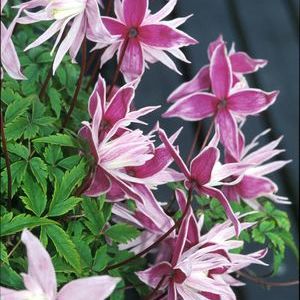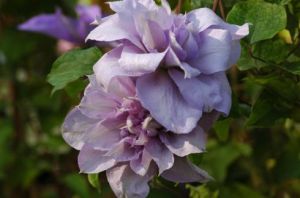
So many of the large-flowered clematis in my garden are blooming extremely early this year, as much as six – eight weeks ahead of schedule. But whenever they choose to bloom, they look wonderful!
During my frequent strolls through the garden, I enjoy observing clematis in all their various stages–and, yes, sometimes I even talk to them. This spring, Clematis ‘The First Lady’ talked back loudly, showing herself off to great advantage. I purchased this clematis two or three years ago as Clematis ‘Rhapsody’, a clematis for which I had been hankering for some time. Once I saw the first meager bloom, I knew I had purchased a misnamed plant. But not until this year, when the poor clematis had built up enough strength to drag itself up out of the heavy shade of a big Fatshedera into the sunshine, did I really see what a gorgeous flower my mistake clematis produced–large lavender blooms (one flower actually measured 9 inches in diameter!), with contrasting burgundy stamens, ruffled edges, and textual ridges in the middle of each pointed petal. Elegantissimo! I was able to identify it as Clematis ‘The First Lady’ and seriously considered deeming this tough and beautiful plant Clematis of the Month for this month.

Serendipitously, yesterday my yoga teacher described to me a clematis a friend gave her as a cut flower. She has a fine eye for detail, so I was able to identify her unseen clematis from her description as Clematis ‘The First Lady.’ I showed her a photo on my smart phone to be sure and impressed both her and myself with my quick ID. That clinched it–Clematis ‘The First Lady’ is Clematis of the Month for May in my garden this year!
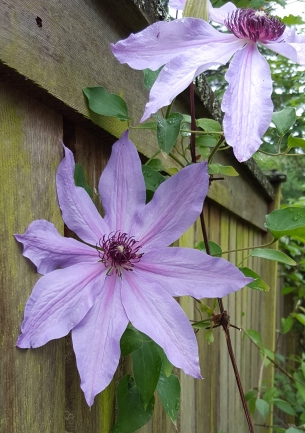
Clematis ‘The First Lady’ is an American clematis introduced into commerce by Arthur Steffen in Long Island, New York, in 1989. Mr. Steffen’s company is also responsible for introducing, in 1932, another gorgeous and famous American clematis, now grown throughout the world, Clematis Betty Corning. The beauty of the name of May’s Clematis of the Month is that you can choose your own favorite First Lady to be represented by this clematis. I know who mine is!
Below is a smattering of the many other worthy candidates blooming in my garden this month.
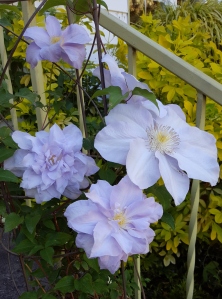
The satiny blooms of Clematis Louise Rowe
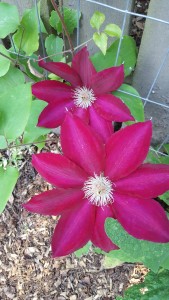
Clematis Rebecca
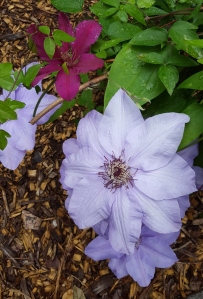
Clematis Ramona (lavender) with Clematis Marta
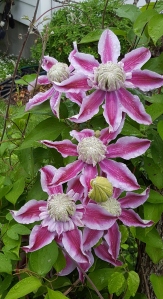
The ever-stunning Clematis Josephine

Clematis Cezanne

Clematis Fireworks

Clematis Utopia

Clematis Fujimusume–such a gorgeous blue!

Clematis Morning Mist–one of these blossoms measured 10 inches!

Clematis Climador (also known as Clematis Königskind)
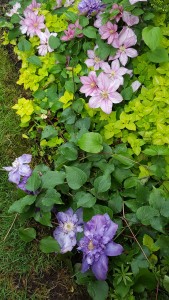
Clematis Caroline (pink) with Clematis Vyvyan Pennell
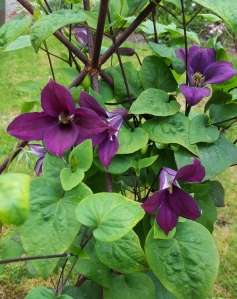
Clematis Lord Herschell
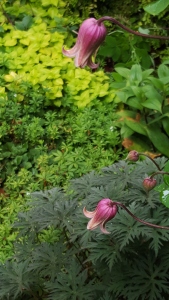
The bells of Clematis Sonnette (also known as Clematis Peveril Peach)

Clematis Crystal Fountain (also known as Clematis Fairy Blue)






























